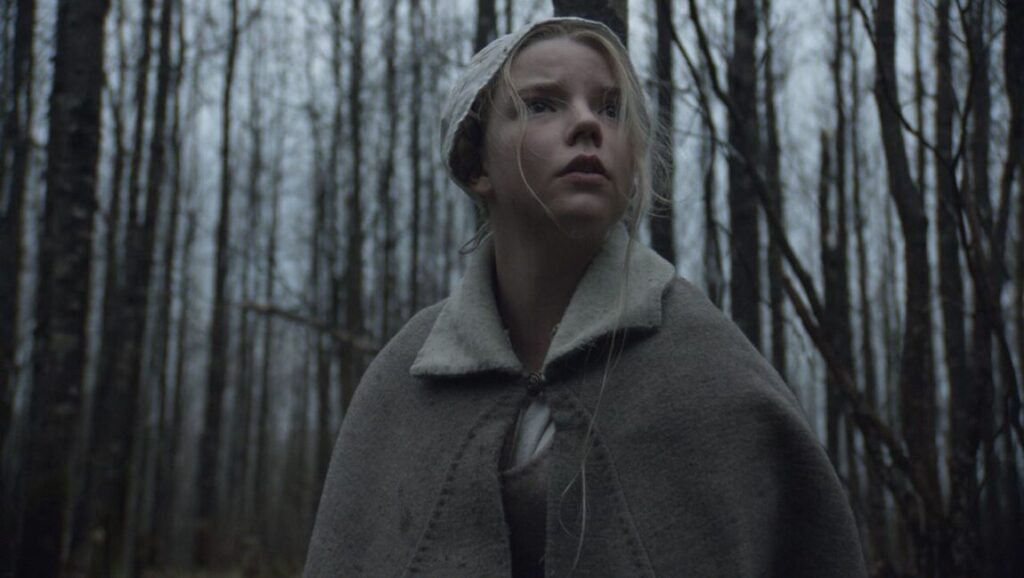Robert Eggers’s debut film arrives prepackaged with the usual hype garnered by a Sundance homerun. Now a year removed from that successful premiere, however, assessments of The Witch have somewhat shifted into a less relevant realm concerning whether horror movies have to be really scary to be effective, or to leave a lasting impression. A portrait of paranoia circa 1630s New England—just five decades before the Salem witch trials—Eggers’s chilly tale of a Puritan family driven mad by satanic forces and familial discord mostly passes the sniff test as an example of frightening period horror. Complications arise only when the film starts treading water with a slow-burn witch-hunt narrative that plays as both frustratingly safe and yet at the same time still plenty appealing—due to the well-rounded cast and some added jolts of terror cropping up throughout.
The Witch begins in promising enough fashion, as the aforementioned family is shunned from their secure New England settlement, for unspecified reasons, and forced to resettle on less certain grounds, in an area that abuts a vast, hypnotically dwarfing forest—where where evil awaits. In impressive fashion, this much-ballyhooed opening offers a high that’s not equaled until The Witch‘s surprising finale. Eggers stages the early progression of his narrative’s terror, and subsequent dismay, swiftly, as the family—parented by father William (Ralph Ineson) and mother Katherine (Kate Dickie)—undergo a loss of one of their own when their newborn son Samuel is swept off into the woods by an unseen entity during a game of peek-a-boo with eldest daughter Thomasin (Anya Taylor-Joy). Thomasin is then cruelly singled out as a bearer of evil and sin, the responsible party for driving a wedge between this fundamentalist family and their quest to make good with the lord.
Eggers tries his damnedest to sustain every ounce of dread felt in The Witch‘s early scenes, but once the finger pointing ensues, the scope and possibilities of his film diminish.
Eggers tries his damnedest to sustain every ounce of dread felt in The Witch‘s early scenes, but once the finger pointing ensues, the scope and possibilities of his film diminish. From here, it’s easy to predict the trajectory of this compact tale, as the family’s numbers dwindle, one by one. The details of those deaths are best life to surprise; suffice it to say that each never quite rivals the harsh menace doled out to the newborn. Steeped in escalating hysteria, The Witch is nevertheless predictably light-years away from efforts by Kubrick or Bergman, both of whom have been name-dropped by Eggers as influences. But give Eggers credit for his potent 17th-century iconography, impressive production design, and even an attention to costuming, all adding up to a modest but effective distraction from whatever the narrative’s shortcomings. And as alluded to previously, The Witch manages to regain some lost ground by piquing with a surprise turn that veers proceedings in a radical and exciting direction. It’s one last plunge into the supernatural that hints at subversive indoctrination, and it’s wholly welcome, if all too late-arriving.

